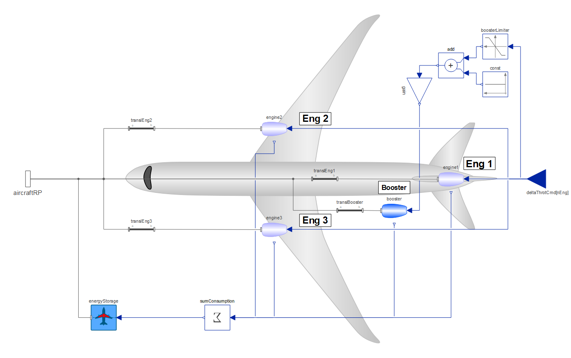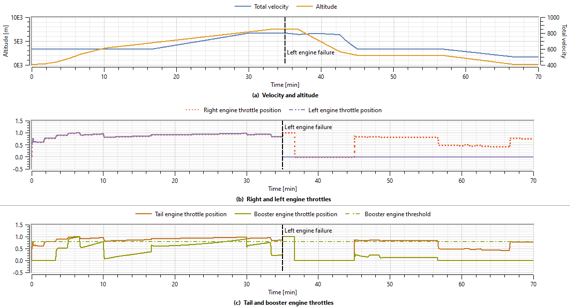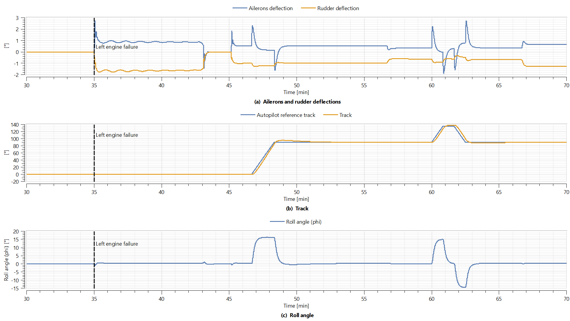航空機のエンジン故障
欠陥エンジン,フラップの故障,制御理論の不具合等の障害が発生した場合,航空機はどのように動作するのでしょうか.この例ではエンジン故障の後のホーカー・シドレー航空機の反応をモデル化しシミュレーションを作成します.
航空機のモデル
ホーカー・シドレーHS-121トライデント3Bの組込みモデルを使います.これは基準軌道を辿る自動操縦装置に接続されています.トライデント3Bは,スロットル要求の閾値を超えると推力を発生させる追加の小型ブースターエンジンを備えた珍しい設計になっています.約35分後航空機の左エンジンが故障します.
エンジン故障後の縦方向運動に対する制御応答
35分後に左エンジンが故障すると,残りのエンジンはすべてパワー全開になります.しかし,航空機は巡航高度で所定の速度を維持するのに十分な推力が提供できず減速してしまいます.
エンジン故障後の横方向運動に対する制御応答
上のプロットは,自動操縦装置が補助翼と方向舵の両方を適用し,生成されたヨーモーメント(左エンジンが故障した直後の差動推力による)を補正し始める様子を示しています.シミュレーションの後半で航空機が降下して減速すると(残りのエンジンで安定した水平飛行を維持できるように),補助翼と方向舵の両方がまだ偏向しており,航空機がまっすぐに飛行できるように小さなロール角で飛行していることも分かります.
Wolfram System Modeler
評価版
ご購入
System ModelerはWindows,macOS,
Linuxで日本語と英語でご利用になれます »
ご質問やコメントはWolframエキスパートまでお寄せください »


